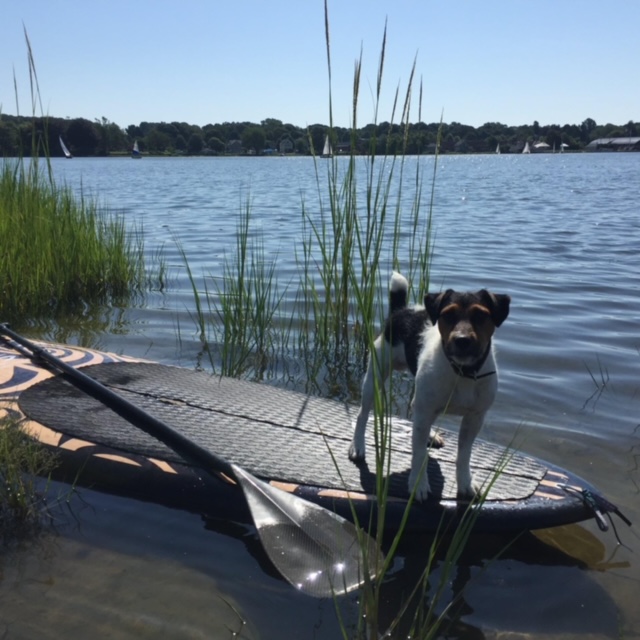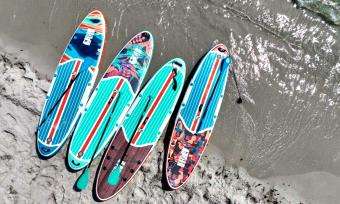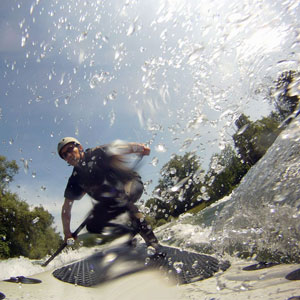[please login to make this ad block disappear]
Hypothermia - Prevention and Care
Hypothermia - Prevention and Care
What is it?
Hypothermia is probably responsible directly or indirectly for more deaths than all other factors combined. Although death by drowning may be the coroner's verdict in many kayaking and canoeing deaths, the actual cause of drowning is frequently unconsciousness due to hypothermia. Because it is the number one killer, it is vital that hypothermia be thoroughly understood so that early symptoms can be readily recognized and appropriate precautions be taken when paddling in cold climates.There are two basic types of hypothermia:
- exposure (gradual) - steady heat loss in a cold environment through respiration, evaporation (sweat, wet clothes) or inadequate insulation (radiation)
- immersion (acute) - rapid heat loss through conduction to cold water, characterized by fast onset (10-30 minutes in ocean water)
Symptoms and Reactions
Faced with a cold environment, the body tries to defend itself in two ways:
- shivering, to increase muscle heat production
- and blood shunting, to reduce heat loss by diverting blood flow away from the body extremities to the body core.
Mild hypothermia occurs as the body's core temperature drops below it's normal 37 degrees C (98.6 degrees F). In the early stages, vigorous shivering is usually accompanied by increased pulse and breathing rates. Cold, white hands and feet (as the blood vessels in the skin constrict) are the first signs of blood being shunted away from the body's extremities.
Irrationality and irritability are early behavioral signs of hypothermia. Hence it is not safe to rely on members of your group recognizing the onset of hypothermia in themselves. In cold conditions, keep watch for symptoms in everybody. Pay close attention to anybody who is confused, abnormally clumsy, paddling off-course, or otherwise behaving erratically.
Severe hypothermia results as the body temperature drops below 33 degrees C. Shunting of blood continues, manifesting as blue-ish (cyanotic) lips and fingertips from poor oxygenation of the tissues near the body surface. Decreased circulation also results in a buildup of acid metabolites (waste products) in the muscles of the extremities until shivering stops and is replaced by muscular rigidity. The pulse and respirations begin to slow as the body core cools to 30 degrees C.
Below core temperature of 33 degrees C, the vital organs are beginning to get cold. As the brain cools, brain cell metabolism slows, resulting in impaired brain function. The level of consciousness deteriorates from confusion and despair to disinterest, incoherence and eventual unconsciousness. Below 30 degrees C, signs of life are very difficult to detect and the patient may be mistaken for dead. The pupils of the eyes will be dilated and fixed. The pulse may be undetectable. Occasional gasps of respiration at a rate as low as 4 or 5 per minute may be the only clue that the patient is still alive. A victim who has not already drowned through unconsciousness or loss of dexterity may die by means of heart failure.
Treatment
Mild Hypothermia
If the casualty is conscious, talking clearly and sensibly and shivering vigorously, then:
- encourage physical activities to generate muscle heat
- get the person out of the water to a dry sheltered area
- replace wet clothing with dry layers, covering the head and neck
- apply hot packs, water bottles, or warm campfire rocks wrapped in hot, wet towels to the groin, head, neck and sides of the chest
- supply hot caffeine and alcohol-free drinks
Severe Hypothermia
- A victim of advanced hypothermia must be treated as a medical emergency. If the victim is getting stiff and is either unconscious or showing signs of clouded consciousness such as slurred speech or severe loss of coordination, transport the patient to a medical facility where aggressive re-warming can be safely initiated, or radio for help.
- Ordinarily, let the hospital re-warm a severely hypothermic person due to physiological complications. However, on a trip, you will not likely have immediate access to medical facilities. Wrap the person warmly and transport to safety. Carry the victim as gently as possible, perhaps in the kayak or canoe, to shelter. Jostling the patient may cause cardiac arrest.
- Remove wet clothing. Place in a dry sleeping bag and join him or her to maximize heat generation. Once shivering has stopped, the patient has lost the ability to generate heat, so simply wrapping in a cold bag will not help. He or she needs a gentle source of heat, like another human body. Apply hot packs to the neck, armpits, sides, chest and groin. Keep the head covered. Warm the victim's lungs by mouth-to-mouth breathing.
- Do not warm, rub or stimulate the severely hypothermic patient's extremities. This may bring cold, stagnant blood from the body surface to the body core, resulting in cardiac arrest. Hot drinks are also dangerous as they draw warm blood away from vital organs. Nearly 3 gallons would be needed to raise core body temp 1 degrees C.
- Things to look out for as you re-warm a severely hypothermic person include a condition called temperature afterdrop which occurs as the body is re-warmed and cold blood from the extremities returns to the body core, resulting in another 1-2 degrees C core temperature drop. Acidosis occurs as the acid waste products from cell metabolism in the extremities is returned to the heart, which may result in re-warming shock. Both afterdrop and acidosis may precipitate cardiac arrest.
- Bystanders may be tempted to start CPR on a severe case as it is very difficult in the field to distinguish between severe hypothermia and cardiac arrest. But chest compressions or any other rough handling of a severely hypothermic person are particularly likely to convert a slow, low output heart rhythm into ventricular fibrillation, a form of heart attack. Check for any body movement or respiratory effort, both of which are lacking in a heart attack victim, and feel for a carotid pulse (in the neck, to the side of the windpipe) for a full minute before initiating CPR.
Surviving a Dunking
The parts of the body with the fastest heat loss are (in order):
- the head
- neck
- sides of the chest
- groin.
Therefore, to reduce heat loss, protect these areas.
- If you capsize and wet exit, try to get back into your boat, or at least back onto it.
- Drownproofing doesn't work in cold water.
- Keep your head out of the water and your hat or hood on.
- Treading water may be OK if you wear a wetsuit, but you will last twice as long if you just hold still.
- Swimming is only good for very short distances - depending on water temperature you may get 10 yards or half a mile.
- Best to wait quietly if help is at all close by.
- Use HELP (Heat Escape Lessening Position):
- arms folded across the chest
- ankles crossed
- thighs close together
- knees bent.
- Huddle two or more persons with chests held close together.
Know Your Paddling Partners
Susceptibility to hypothermia depends not only on the conditions of exposure but also on body size.
- Children are considerably more susceptible than large adults.
- Older folks generally more than young.
- Thin people are more susceptible than fat.
- Men more so than women due to a generally smaller subcutaneous fat layer.
- Alcohol and drugs may impair shivering or dilate surface blood vessels, thereby masking symptoms or interfering with blood shunting.
- Certain medical conditions may make a person particularly susceptible to hypothermia, such as:
- hypothyroidism, in which too little thyroid hormone (regulates cellular metabolic rate) is produced (older people);
- diabetes (low blood sugar problems);
- psychiatric disorders (epileptics); so know who you're paddling with.
Summary of Symptoms
- Uncontrollable shivering and inability to warm up.
- Confusion, irritation, clumsiness, slurred speech.
- Erratic paddling and inability to maintain course (disorientation).
- Blurred vision and lack of coordination.
- Despair and disinterest.
- Ashen white face and hands.
- Shivering replaced by muscle rigidity.
- Paradoxical stripping of clothes as cold impairs thermoregulation center of brain.
- Incoherence and collapse; unconsciousness.
Prevention
Hypothermia is preventable through common sense. Potentially hypothermic situations must be managed before they become serious.
- Recognize the environmental conditions leading to hypothermia.
- Wear appropriate clothing for cold and wet conditions. Wear a hat at all times. Use polypropylene underwear to wick water away from the skin, wool on top and a wind- and waterproof covering. Acrylic is better than wool for insulation in a dunking. Even better is a wetsuit or immersion (survival) suit with a hood to minimize heat loss.
- Physical fitness, continuous exercise, high-calorie food and a hot thermos of tea or hot chocolate will prevent the onset of mild hypothermia.
- Avoid exhaustion by knowing your limits. If you are lost, avoid panic and other energy-depleting activities.
- In wilderness settings, carry fire-starting materials and some form of improvisational shelter.
- Pack a VHF radio and know how to use the emergency Channel 16 to call for help.
- Carry chemical hot packs and a thermometer in your first aid kit.
- Know your paddling partners.
- Learn to recognize the early warning signs of hypothermia
Some good additional information here: Cold Water Boot Camp
Forums

- Add rocker on a Sup » Hello there... (River SUP)
- 11' hard for river » Thanks, But is'nt for the same river... (River SUP)
- sup master instructor course from the Italian Federation for Amateur Paddling: October2016-June2017 » You should check out the ACA SUP program, as it sounds kinda similar...
- Waterblading - Send your Pics » bounce...
- Show us your SUP fish pics! » Extra Wide SUP for Fishing WideSUPfor2-2-3... (SUP Fishing)
- Michael Dolsey SUPs Has Just Opened a Southern California Distribution Center » NEWS FLASH Michael Dolsey Stand Up Paddleboards has just opened a southern California Distribution Center servicing the entire West Coast market...
Login to post here






 Get for free:
Get for free:








